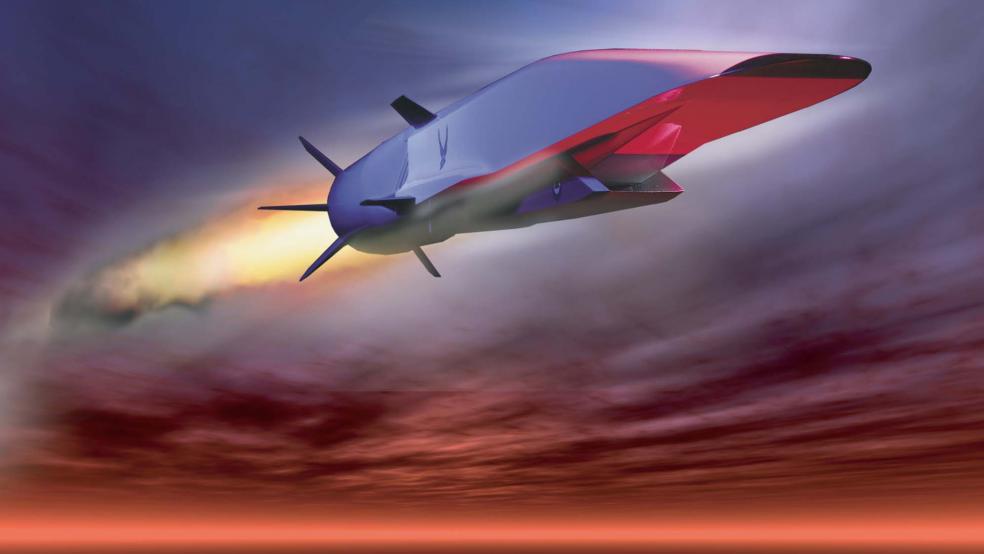The U.S. Defense Department should invest heavily in an emerging class of high-speed platforms that could help the military overcome a variety of potential enemy defenses by hitting targets at several times the speed of sound, according to a new think tank report.
Hypersonic weapons are like missiles, but they’re capable of reaching speeds of 3,600 miles per hour or more. They promise to “revolutionize military affairs in the same fashion that stealth did a generation ago and the turbojet engine did a generation before,” argues a study released Tuesday by the Air Force Association’s Mitchell Institute for Aerospace Studies.
Related: Here’s the New, Secret Warplane Everyone Will Soon Be Talking About
Once realized, the incredibly fast projectiles would allow the U.S. to strike targets deep in enemy territory, even if it were defended by anti-air systems, simply because of their speed would cut hours-long transcontinental flights down to minutes. The weapons also could lessen the threat to U.S. airmen, since piloted aircraft like fighter jets or bombers would be able to do their job faster.
China and Russia are already investing in the technology, the report notes. Beijing has conducted at least five tests of its Wu-14 hypersonic strike vehicle in the last two years. That platform consists of launching a rocket to the upper atmosphere, then releasing a glider that reaches hypersonic speeds upon descent.
Meanwhile, Moscow plans to tests its new hypersonic weapon by 2020.
“These developments portend severe costs for the loser in this competition. The U.S. not only would cede decades worth of investment, test, research, and experimentation in this arena, but would also face strategic vulnerability if other nations field a successful hypersonic weapon first,” according to the study.
Related: The Air Force’s New Bomber Gets a Name: Meet the B-21
The U.S. isn’t coming at the problem cold, though.
Congress has appropriated millions for hypersonic tests and research and development. In a 2013 test, the X-51 Waverider, similar to a cruise missile and powered by a supersonic combustion ramjet (scramjet) engine, flew at speeds around 3,500 mph for over three minutes before it ran out of fuel and crashed in the Pacific Ocean.
Despite the seemingly successful test, another experiment, this time dubbed the Hypersonic Air Breathing Weapon Concept, isn’t slated for another four or five years.
The U.S. investment “is now at risk due to indecision and vacillation. Having pioneered hypersonic flight, the United States must redouble its efforts to retain its lead in hypersonics,” according to the Mitchell report.
Related: How the Air Force’s New Planes Could Bankrupt the Pentagon
The study pointedly aimed at Congress first recommends that lawmakers first recognize the potential of the blisteringly fast technology; second, it recommends lawmakers help the Pentagon chart a path “for moving forward based on maturing incremental, realistic and achievable technologies leading to practical hypersonic weapons.”
It also recommended putting the Air Force in the lead of all hypersonic research and development and making the Defense Department establish a “realistic” acquisition strategy.
The authors envision an air-launched medium-range hypersonic strike weapon in the 2020s; a more-capable offensive, intelligence-gathering weapon in the 2030s; and an “eventual goal of a persistent, reusable hypersonic” aircraft in the 2040s.





